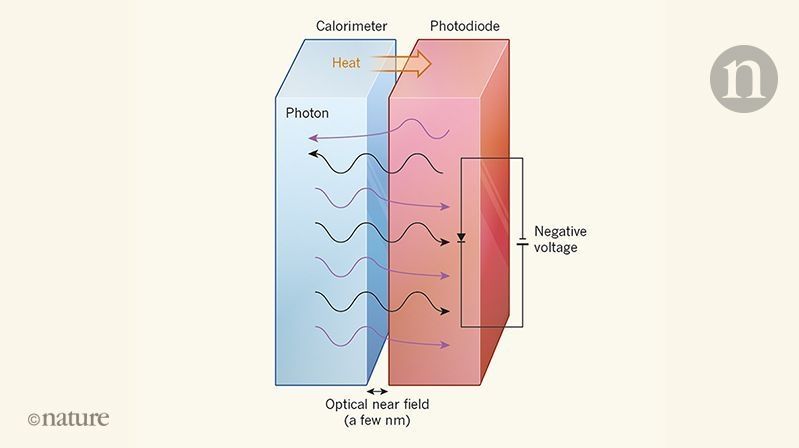When two bodies are at different temperatures and not in direct contact with each other, it is generally assumed that thermal radiation (heat) will be transferred from the hotter body to the colder one. If the distance between the bodies is larger than the dominant thermal wavelength (about 10 micrometres at room temperature), there is a maximum heat-transfer rate, known as the black-body limit. Writing in Nature, Zhu et al. report that an electronic device called a photodiode can cool a solid that is colder than the photodiode when the two objects are in each other’s near field — that is, when they are separated by a distance much smaller than the thermal wavelength. This demonstration could have a tremendous impact on the fields of cooling and heat management.
It is well established that solid objects can be cooled by harnessing the properties of laser light. A laser-free technique that attains such cooling by tuning thermal radiation could have many practical applications. A method for near-field optical cooling.
